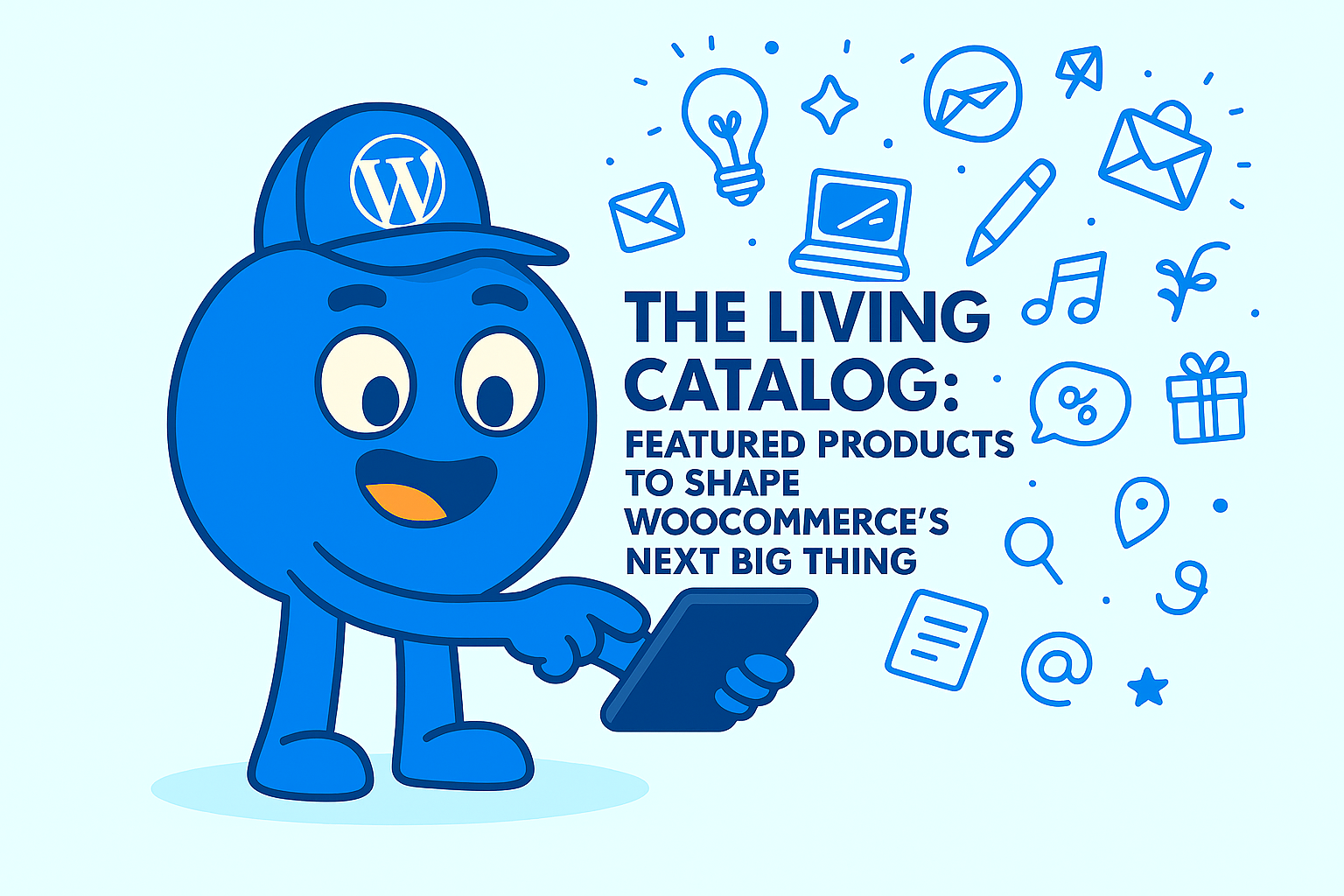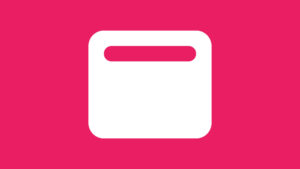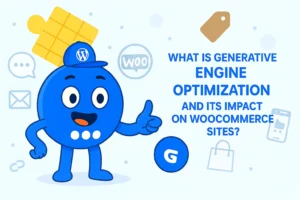The Living Catalog: Featured Products to Shape WooCommerce's Next Big Thing
Are your WooCommerce featured products just sitting there, looking pretty but not really pulling their weight? In today’s dynamic online world, simply showcasing your best-sellers is no longer enough. The traditional “static shelf” approach to featured products misses a huge opportunity to connect with customers and truly innovate.
Imagine a future where your featured products aren’t just selling what you have, but actively helping you build what’s next. This is the core idea behind the “Living Catalog”. It transforms your featured sections into dynamic, interactive spaces for product innovation, customer co-creation, and building intense anticipation for future launches. It’s about pulling your audience into your creative process, making them feel like more than just buyers – they become collaborators.
And how do you make this interaction seamless and effective? By ensuring your customers can always engage. This is where tools like the Floating Awesome Button (FAB) become indispensable. FAB helps make your website more engaging by ensuring key actions are always visible and just one click away, turning casual visitors into active participants in your Living Catalog. It’s about empowering your WooCommerce store to do more, transforming a simple display into a powerful engine for website visits and customer engagement.
Introduction: Beyond the Static Shelf – Why Your Featured Products Need a Future

In today’s fast-paced digital marketplace, simply listing featured products on your WooCommerce store is no longer enough to capture customer attention and drive conversions. The traditional approach of displaying static items on a shelf is outdated. What your store needs is a Living Catalog—a dynamic, interactive, and evolving showcase of products that engages visitors and keeps them coming back for more.
Below are key reasons why this shift is necessary and how Floating Awesome Button (FAB) can help transform your featured product strategy.
The Need for a Living Catalog
- Engagement Over Static Displays
In a competitive e-commerce environment, static product displays fail to capture attention. A Living Catalog keeps products fresh, engaging, and responsive to customer needs. It offers a continuously evolving display that adapts based on trends, customer preferences, and real-time interactions. - Building Anticipation
Rather than simply showcasing what’s currently available, a Living Catalog creates excitement about what’s coming next. It’s about building anticipation and a sense of urgency, prompting customers to return frequently to check for new, exciting products or updates. - Personalization
The Living Catalog can be tailored to customer behaviors, making the shopping experience more personalized and relevant. As customers interact with the store, the featured products adjust to reflect their interests and actions, fostering a deeper connection.
Understanding the E-Commerce Landscape
The global e-commerce market is growing at an exponential rate, with projections indicating it will reach $4.8 trillion by 2025. Yet, despite this immense growth, the average conversion rate across e-commerce sites still sits at a mere 1.88%. This indicates a need for innovative strategies to convert visitors into customers.
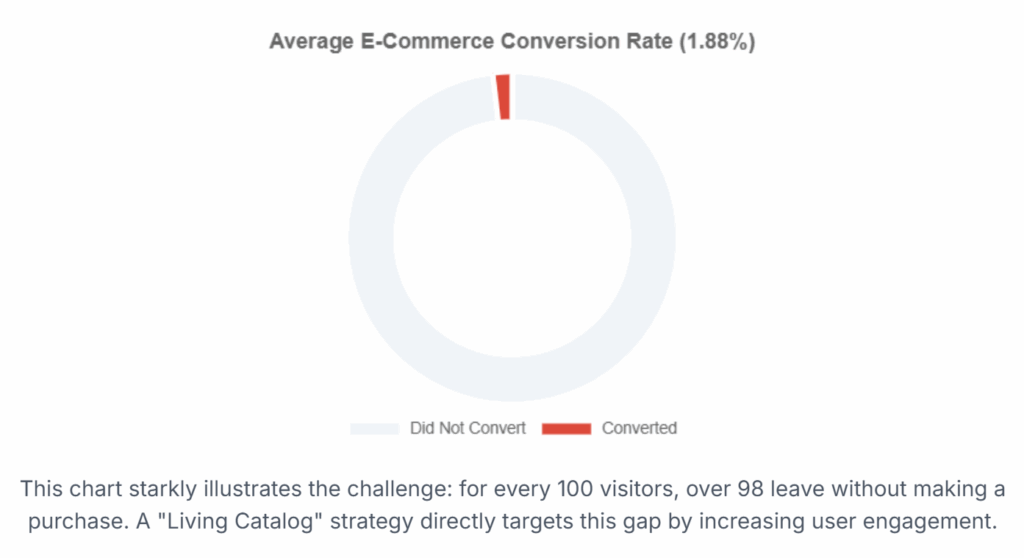
Platforms like WooCommerce, which powers over 3.5 million websites and holds a 20.1% market share, are at the center of this shift.
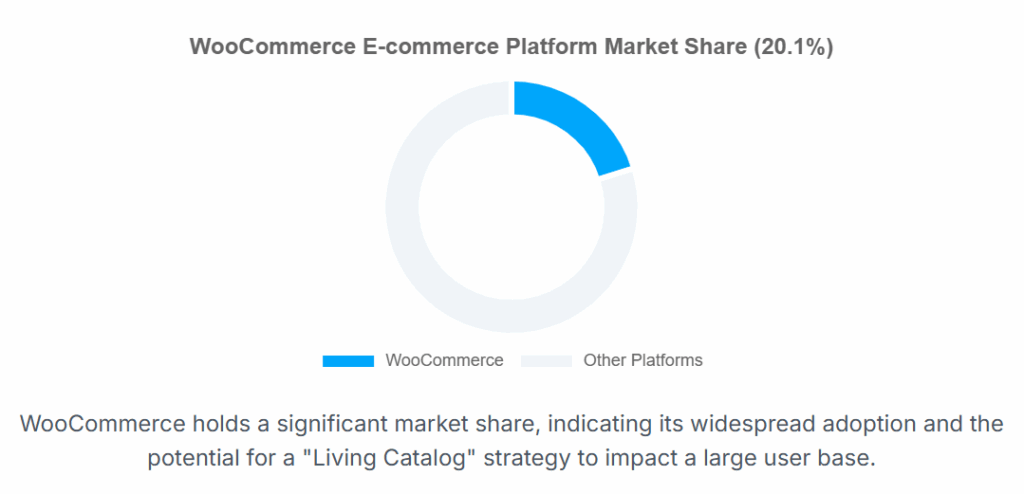
WooCommerce is not just a tool for selling products; it’s a platform that can be used to engage customers in ways that drive long-term loyalty.
User Engagement: The Key to Success
- Active Interaction is Essential
Today’s consumers expect more than just static product pages. They want to interact with the content they see—whether that’s through reviews, live chats, or engaging calls to action. Websites that encourage interaction see higher engagement, lower bounce rates, and increased sales. - Building Customer Loyalty
Engaged users are more likely to return, and they are more likely to make repeat purchases. Interactive content keeps users interested and encourages them to explore your store in more detail. - Increased Conversions Through Engagement
When customers actively engage with the store’s content—such as adding products to wishlists, signing up for updates, or sharing items with others—their likelihood of converting increases significantly.
FAB as the Catalyst for Change
This is where the Floating Awesome Button (FAB) comes into play. FAB isn’t just a plugin—it’s a game-changer. With its customizable floating action buttons, popups, and toasts, FAB helps WooCommerce stores shift from static product listings to a dynamic, Living Catalog that keeps customers engaged.
Here’s how FAB makes this happen:
- Sticky Action Buttons: FAB adds buttons that stay visible as users scroll, providing quick access to key actions like featured products, promotions, or contact info—making navigation easy and boosting conversions.
- Popups and Toasts for Engagement: Use FAB’s popups and toasts to highlight offers, updates, or sneak peeks without interrupting the user experience. These dynamic features keep visitors engaged and excited.
- Seamless Integration with WooCommerce: FAB works smoothly with WooCommerce to enhance interactivity. Real-time notifications, countdowns, and product updates make your store a constantly evolving Living Catalog, reflecting customer interests.
FAB offers a simple yet powerful toolkit that can transform how your featured products are presented and interacted with. It provides a seamless way to engage visitors, enhance navigation, and boost conversions by giving them a way to interact with products as they browse.
Why Your Featured Products Deserve More
- Beyond a Transaction
Traditionally, featured products were simply displayed for sale, but they didn’t encourage interaction. The Living Catalog, on the other hand, invites customers into an ongoing conversation. With the right tools, like FAB, you can turn your product listings into a space where customers are encouraged to interact, share feedback, and stay involved. - Continuous Product Evolution
Your featured products should evolve based on customer interactions, feedback, and the latest trends. FAB allows you to dynamically update your featured products and display them in new and engaging ways. - A Shift in Strategy
Moving from static product listings to a Living Catalog is more than just a cosmetic upgrade—it’s a fundamental shift in your e-commerce strategy. By focusing on engagement, anticipation, and interaction, you move away from simply showcasing products to creating a memorable, evolving shopping experience.
Part 1: The “Sneak Peek” & Anticipation Engine: Building Hype for Tomorrow, Today

Creating excitement and anticipation around upcoming products or exclusive releases is essential to an effective e-commerce marketing strategy. A Living Catalog takes this concept further by transforming featured products into engines of anticipation. This means your website doesn’t just wait for a product to be released; it actively builds buzz, gathers interest, and secures early commitments from your visitors.
Here’s how you can harness this approach to boost pre-launch engagement and drive conversions:
1. Building Anticipation with Pre-Launch Campaigns
Before your product even launches, creating buzz is crucial to driving demand. Pre-launch campaigns are a proven way to generate interest and excitement. Here’s how FAB can amplify these campaigns:
Why Pre-Launch Campaigns Matter:
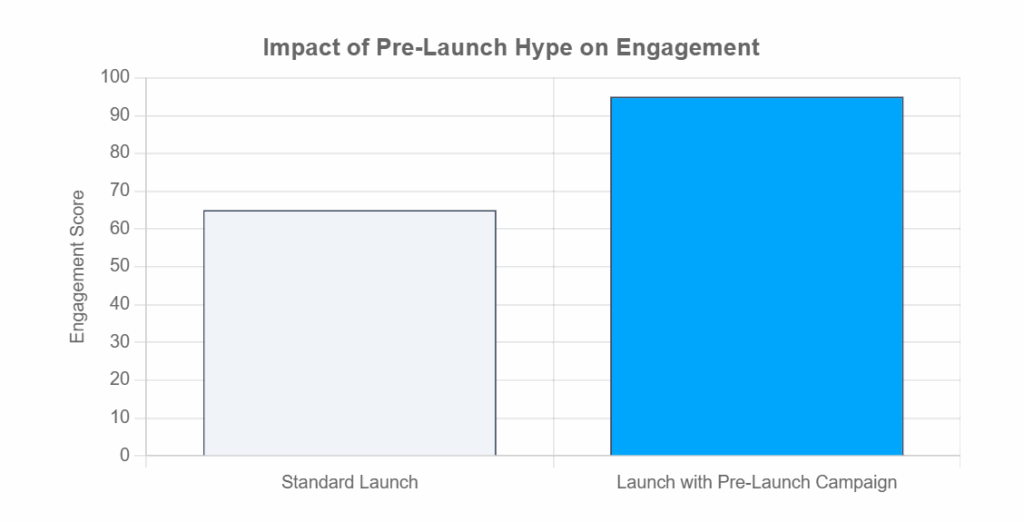
Pre-launch campaigns are important because they create early demand for a product and generate excitement ahead of its official release. Studies have shown that pre-launch publicity can actually be more effective than post-launch advertising in driving initial interest.
How FAB Helps:
FAB helps turn your site into a dynamic space where anticipation is built continuously, not just on a single page. By adding anticipation touchpoints like popups and floating buttons containing the products, reviews, and benefits, you can keep excitement flowing across the entire website.
Key Metrics to Track:
Tracking metrics such as pre-launch sign-ups, website traffic, and user engagement provides insight into your audience’s interest level, helping you adjust your marketing strategy for maximum impact.
2. Generating Pre-Launch Buzz with FAB
Generating pre-launch buzz is all about getting customers excited about what’s coming, and FAB can seamlessly support this effort by creating engaging touchpoints across your site. Here’s how:
Create Dedicated Pre-Launch Pages:
A common pre-launch strategy is a dedicated landing page that features an email signup form for early access or notifications. FAB integrates perfectly with this strategy by enabling floating buttons that trigger popups with these signup forms.
How FAB Works with This Strategy:
FAB allows you to place floating buttons on any page, which trigger popups when clicked. These popups can feature email subscription forms for “early bird access” or launch notifications.
In addition to that, you can simply add a floating call-to-action button that automatically connects it to your subscription forms when clicked by the customers. By auto-triggering based on user behavior (like time delay or exit intent), FAB ensures that users are prompted at the right moments to engage.
Benefits of Behavior-Driven Engagement:
The ability to trigger popups based on user behavior ensures that anticipation isn’t limited to a single page. Instead, it can be spread across your site, maintaining buzz and excitement wherever the visitor is.
3. Countdown Timers to Accelerate Urgency
Adding a sense of urgency can drive immediate action, and countdown timers are a great way to achieve this. Here’s how FAB enhances the urgency around your pre-launch:
Why Countdown Timers Are Effective:
Countdown timers build urgency and prompt customers to act quickly before time runs out. They create a visual sense of limited availability, which encourages immediate engagement and action.
FAB’s Integration with Countdown Timers:
While FAB doesn’t have a dedicated countdown timer, however you can enable the Countdown Timer in the button setting to create a sense of urgency when customer hover over the button. Alternatively, you can integrate with external plugins that provide countdown features. By using shortcodes, you can display countdown timers in FAB’s popups or toast notifications, making the call-to-action more compelling.
Synergy Between FAB and Other Tools:
FAB’s real strength lies in its ability to function as a container for other useful tools. Whether it’s countdown timers or custom forms, FAB helps enhance the effectiveness of these elements, creating a more dynamic and engaging pre-launch experience.
4. Early-Bird Rewards & Exclusivity
Offering exclusive early-bird deals or rewards is a powerful tactic to incentivize early purchases. Here’s how FAB can drive these efforts and increase conversions:
Creating Exclusivity:
Early-bird rewards, limited-time offers, and exclusive previews cultivate a sense of urgency and exclusivity. Offering these deals before the official launch encourages customers to act fast and make early purchases.
FAB’s Role in Early-Bird Engagement:
FAB makes it easy to display buttons that open modals with details about these offers. These modals can link to special application forms or hidden product pages, providing a seamless way to engage users. In addition to that, you can briefly announce these offers through an announcement toast whenever customer open your website.
Increasing Conversion Rates:
FAB’s Pro version allows for conditional display based on user roles, meaning you can show exclusive early-bird offers only to specific groups, like VIP customers or beta testers. This targeted approach increases the likelihood of conversion by presenting the right offer to the right audience at the right time.
5. Leveraging Engaging Content for Anticipation
Engaging content is essential for creating deeper emotional connections with your audience. By sharing exclusive behind-the-scenes content or influencer collaborations, you can significantly increase excitement. Here’s how FAB plays a role:
Why Engaging Content Matters:
Content like behind-the-scenes videos, product teasers, or influencer collaborations builds emotional investment in your products and fuels word-of-mouth marketing. Engaged customers are more likely to share their excitement with others, spreading buzz organically.
FAB’s Role in Content Engagement:
FAB enables you to feature floating buttons that, when clicked, open modals containing embedded YouTube videos, product development updates, designer interviews, or influencer unboxings. This transforms a passive viewing experience into an interactive and engaging journey.
Creating Interactive Discovery:
Beyond static images, dynamic media like animated GIFs and videos can be highlighted through FAB’s popups, bringing interactive content to the forefront of the user experience. These elements spark curiosity and excitement, driving deeper engagement with your product.
Part 2: Co-Creation & Community-Driven Development: Your Customers as Innovators

A Living Catalog is much more than just a platform for showcasing products; it invites customers to actively participate in the product evolution process. By embracing co-creation, businesses can foster deeper customer loyalty and ensure their products truly resonate with their audience.
By integrating feedback mechanisms into the featured product experience, businesses can transform customers into valuable innovators who help shape the future of the products they love. Let’s explore how you can leverage this approach to drive engagement and innovation.
1. Facilitating Direct Customer Feedback
Customer feedback is invaluable for understanding needs and improving offerings. It has become one of the most powerful drivers behind modern market research strategies, with businesses increasing their feedback collection efforts by over 50% in the past three years. Here’s how FAB can facilitate this process:
Why Customer Feedback Matters:
Customer feedback helps businesses understand their audience’s needs, pain points, and preferences, making it a central part of successful product launches. Approximately 65% of successful launches credit the integration of customer feedback.
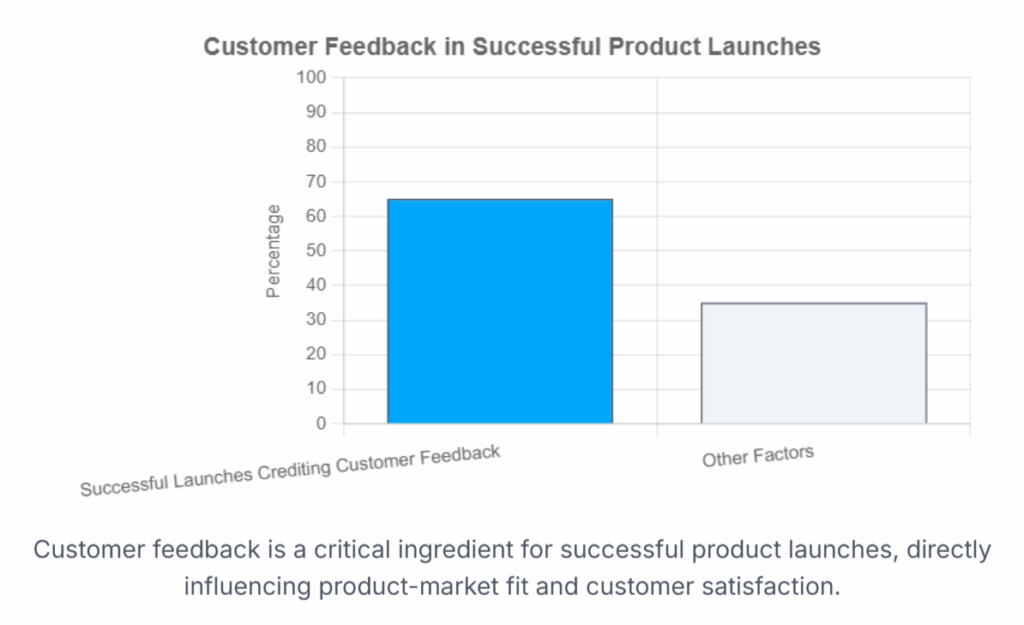
How FAB Helps Collect Feedback:
FAB can trigger survey popups at strategic points in the customer journey, such as after viewing a featured product or making a purchase. These popups can easily embed shortcodes for popular survey plugins, making it easy to collect insights.
A floating “Feedback” button can remain visible throughout the browsing experience, offering an always-accessible channel for unsolicited input. This transforms feedback collection from a passive post-event activity into an ongoing, integrated process.
FAB’s Location Rules allow for advanced feedback segmentation based on user roles (e.g., loyal customers vs. new visitors), products viewed, or even session data. This makes feedback collection more relevant and actionable, helping businesses gain detailed insights for product improvements.
Granular Insights:
Instead of generic surveys, FAB can be used to ask specific questions to users who have interacted with particular product categories, logged-in customers, or even those who have abandoned their shopping carts. This approach leads to highly targeted insights, allowing businesses to improve products and personalize marketing strategies.
2. Boosting Reviews for Social Proof
Product reviews are an incredibly powerful form of social proof, which significantly impacts purchasing decisions.
Studies show that the likelihood of a product being purchased increases by 270% if it has just five reviews.
Here’s how FAB can encourage more reviews:
Why Product Reviews Matter:
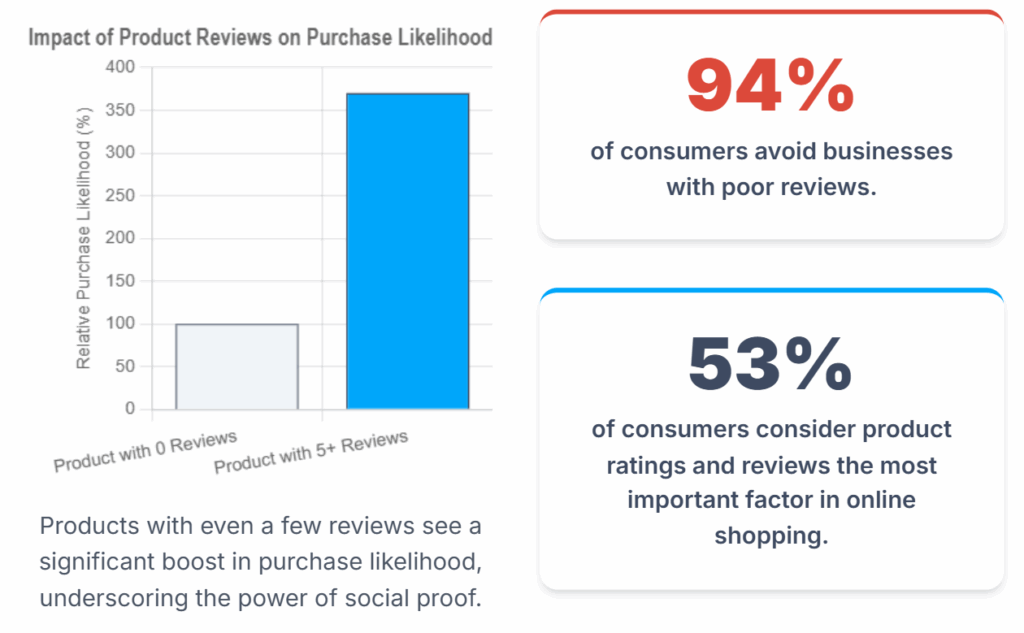
94% of consumers avoid businesses with poor reviews, and 53% consider product ratings and reviews the most important factor in online shopping.
FAB’s Role in Boosting Reviews:
FAB can display a “Review Request” popup after a customer has made a purchase, or a set time after their purchase. This proactive approach encourages customers to share their feedback, boosting your review count and driving higher conversions.
3. Highlighting User-Generated Content (UGC)
User-generated content (UGC) is an essential tool for building trust and authenticity. Marketers using UGC in campaigns report significantly better results compared to traditional branded content. Here’s how FAB can enhance UGC visibility:
Why UGC Is Powerful:
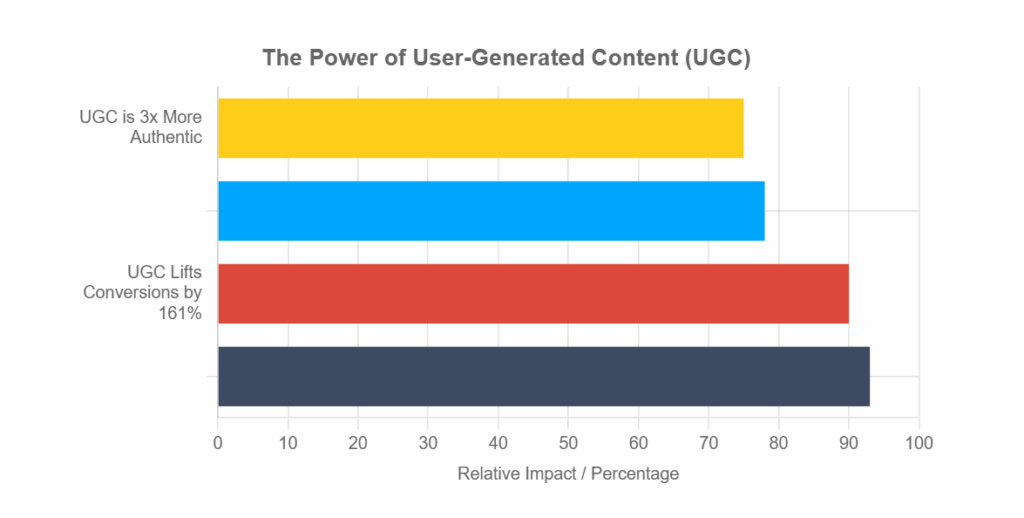
93% of marketers report that UGC performs significantly better than branded content. It influences 70% of Gen Z and 78% of Millennials when making purchasing decisions. Including UGC on product pages can increase conversions by 161%.
FAB’s Role in Showcasing UGC:
FAB can display a curated gallery of customer-submitted content like photos, videos, and testimonials in popups. This content helps build social proof and influences purchasing decisions.
Celebrating the Community:
FAB can also be used to feature a “Customer of the Month” or “Featured Review” popup. These popups can drive product discovery, celebrate community engagement, and foster a sense of belonging.
Proactive Display of UGC:
The sticky nature of FAB and its ability to trigger popups ensures that feedback requests and UGC showcases are presented at optimal moments, amplifying the impact of social proof.
4. Building Trust Through Transparent Feedback
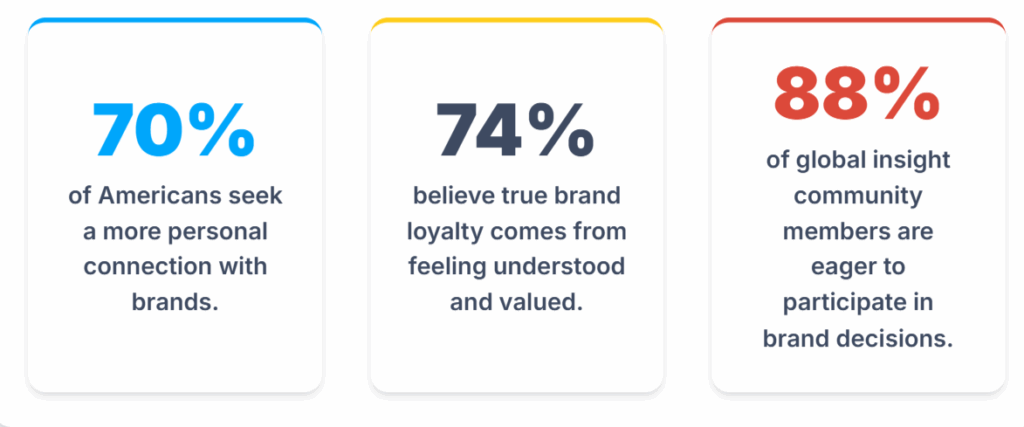
The active solicitation of feedback and showing customers how it influences product improvements helps build trust. By announcing product updates based on customer suggestions, businesses demonstrate they value their customers’ opinions. Here’s why this is crucial:
Why Transparency Matters:
Showing how feedback directly leads to improvements builds a sense of trust and loyalty. This transparency creates a more customer-centric business model, making the “Living Catalog” a true representation of your brand’s commitment to customer engagement.
Loyalty and Personal Connection:
According to research, 70% of Americans seek a more personal connection with brands, and 74% believe true brand loyalty comes from feeling understood and valued. By making feedback a core part of the product development process, businesses foster deeper relationships with their customers.
Encouraging Participation:
88% of global insight community members are eager to participate in brand decisions. By making your customers part of the innovation process, you not only build loyalty but also tap into a pool of valuable insights that directly shape your products.
Part 3: The Iterative Feedback Loop: Continuous Learning from Your “Living Catalog”

The Living Catalog thrives on continuous improvement, driven by an iterative feedback loop. This loop isn’t just about collecting data once; it’s a systematic process of asking, categorizing, acting, and following up (the ACAF loop) to ensure that featured products—and the entire product line—stay perfectly aligned with customer desires.
By integrating FAB (Floating Awesome Button) into this loop, businesses can make customer feedback both visible and actionable, creating a dynamic environment of constant product evolution. Let’s explore how this iterative process works.
1. Implementing the ACAF Feedback Loop with FAB

The ACAF loop is a proven framework for systematic feedback collection and improvement. While the loop defines the process, FAB acts as the central communication tool that makes it visible, continuous, and actionable. Here’s how FAB supports each stage:
a. Ask (Collect Feedback):
FAB facilitates diverse collection channels, such as surveys, direct communication, and feedback buttons, all through its popup and button functionalities. This could include:
- In-app/on-site surveys triggered by FAB’s floating buttons.
- Email surveys, where FAB links directly to forms or surveys.
- Feedback buttons, always visible, enabling quick and easy feedback submission.
This means feedback collection happens seamlessly and continuously, keeping the conversation ongoing with customers.
b. Categorize (Analyze Feedback):
While FAB doesn’t directly analyze data, it serves as the collection point. Once feedback is gathered through popups and surveys, it can be directed to analytics tools for categorization.
Key themes such as user experience, product quality, or service satisfaction can be easily identified, helping prioritize areas for improvement.
c. Act (Implement Changes):
After analyzing the feedback, businesses create action plans and implement changes. This is where the Living Catalog comes to life:
- Product features are refined.
- New products are developed based on customer input.
- Existing products are re-featured to align better with customer needs.
This ensures that the catalog isn’t static; it’s always evolving to meet the demands of the customer.
d. Follow-up (Inform Customers & Iterate):
A crucial step in the feedback loop is informing customers about the changes made based on their feedback. FAB plays a key role here, making follow-up both visible and actionable:
- Use toast notifications or modal popups to announce product updates or new features.
- Reference customer feedback in these updates, showing customers that their input directly led to improvements.
Studies show that responding to feedback results in 25% to 30% higher retention rates, and businesses that close the loop within 48 hours see a 12% increase in retention. Customers are also 21% more likely to engage in future surveys when the loop is closed.
2. Refining Data Collection with Conditional Logic
One of FAB’s standout features is its ability to filter feedback collection based on user roles, page visits, and user sessions. This allows businesses to gather highly specific and contextually relevant feedback. Here’s how:
- Customizable Feedback Prompts:
For example, FAB can trigger a “How can we improve this product?” popup only for users who have purchased the product or visited its page multiple times. This ensures the feedback is focused and relevant to the user’s experience. - Contextual Relevance:
Targeted surveys based on user roles or session behavior lead to higher-quality insights. Instead of general surveys, businesses can gather detailed, actionable data from specific customer segments, increasing the chances of identifying the next big product feature or improvement before it’s needed on a large scale. - Proactive Product Development:
If feedback consistently highlights a particular need or feature request, FAB’s targeting abilities can be used to validate this feedback through more specific surveys. This allows businesses to proactively develop products or features that anticipate market demand, driving innovation and staying ahead of the competition. - A/B Testing for Feedback Collection:
FAB also enables A/B testing of different feedback prompts, button placements, or popup triggers. By testing these elements, businesses can determine which methods are most effective in gathering valuable insights from customers, further improving the feedback loop.
3. Continuous Monitoring & Adaptation
The Living Catalog is a constantly evolving entity; it’s never truly “finished.” For a catalog to stay relevant, it requires continuous monitoring of Key Performance Indicators (KPIs) and consistent adaptation based on customer feedback. Here’s how FAB contributes to this ongoing process:
- Driving Traffic to Updated Products:
After making changes based on feedback, FAB’s button helps drive traffic to new product versions or updated product pages, ensuring customers are aware of the improvements. - Follow-up Surveys to Measure Satisfaction:
FAB can trigger follow-up surveys after product updates or feature releases to gauge customer satisfaction with the changes. This helps businesses measure the effectiveness of product adjustments and continue refining the catalog. - Monitoring Customer Sentiment:
By continuing to collect feedback, businesses can stay in tune with evolving customer expectations and market trends, ensuring the catalog remains aligned with customer desires. - Building Trust and Loyalty:
The continuous collection and transparent implementation of feedback shows customers they are valued and heard. It builds a sense of trust and loyalty, making the Living Catalog a customer-centric business model. By keeping customers engaged and informed, businesses differentiate themselves in a competitive market, creating long-term brand loyalty. - Cost Efficiency:
Integrating customer feedback into the development process can lead to up to a 40% reduction in market research costs, as businesses use real customer data to inform decisions instead of relying on expensive, traditional research methods.
Part 4: Technical Architecture for the Living Catalog: Making It Happen in WooCommerce

Transforming a WooCommerce store into a Living Catalog requires a seamless integration of native WooCommerce functionalities with the dynamic capabilities of the Floating Awesome Button (FAB). This section explores the practical steps and considerations for technical implementation, ensuring the integration is smooth and enhances store performance.
1. Integrating FAB with WooCommerce for Dynamic Product Display
The Living Catalog concept gains its true power when FAB’s interactive elements work in tandem with WooCommerce’s product data. FAB enhances user experience and drives conversions by dynamically displaying product-related content through popups, toast notifications, and sticky action buttons. This integration makes your featured products more contextual and relevant, ensuring they reach the right user at the right moment. Here’s how:
FAB’s Ability to Define Featured Products:
FAB allows for conditional display and auto-triggers, enabling you to show the most relevant featured products to users based on their behavior and interaction history. This transformation leads to higher conversion rates by reducing friction and increasing relevance.
Displaying Product Catalogs and Offers via FAB Popups:
FAB can display product catalogs and special offers in its modal popups. A FAB button, when clicked, can open a popup showing a selection of featured products, discount offers, or a quick purchase option. This functionality enhances the shopping experience and provides instant access to sales opportunities.
Embedding WooCommerce Shortcodes in FAB Modals:
FAB supports embedding WooCommerce shortcodes in its popups, allowing you to display dynamic product content directly within FAB modals. Whether it’s product grids, single product pages, or add-to-cart buttons, FAB can effectively act as a universal container for any WooCommerce product display rendered via shortcodes.
Find out How to Turn Any WooCommerce Product into a Floating Call-to-Action Button
Direct WooCommerce Actions:
FAB offers direct WooCommerce actions, such as:
- “Add to Cart with {product_title}”
- “Buy Now with {product_title}”
- “Featured Product”
- “Cart Reminder”
- “Apply Coupon by Cart Subtotal”
These built-in integrations simplify the process of linking FAB to product-related actions, enhancing the user experience and conversion paths.
2. Leveraging Conditional Display for Targeted Showcasing
FAB’s Location Rules unlock advanced conditional filtering that makes the Living Catalog truly dynamic and responsive to user needs. This personalization goes beyond static “featured products”, incorporating smart recommendations based on user behavior. Here’s how FAB’s conditional display makes this possible:
- Dynamic Product Recommendations:
FAB enables a shift from static featured products to dynamic recommendations based on customer behavior. The “Recently Viewed Products Popup”, “Bestsellers”, and “Smart Upsell/Cross-Sell” integrations empower you to showcase products relevant to the user, enhancing the customer experience and increasing sales. - Filters by Custom Post Type, Page/Post, Taxonomies & Terms:
Featured promotions can be displayed only on relevant product pages, categories, or tags. For example, a popup promoting “Accessories for X” could be shown only on product pages within the “X” category. - Filters by User Session & Roles:
Exclusive offers or featured products can be shown to logged-in users, VIP groups, or first-time visitors. This personalized approach ensures that users see products tailored to their interests and needs. - Mobile-Friendly Customizations:
FAB allows you to optimize product display across different devices, ensuring that the mobile experience is just as engaging and effective as the desktop version. This mobile responsiveness ensures that users get a smooth browsing experience on any device. - Auto-Trigger for Modals/Popups:
You can use auto-triggers like time delays, exit intent, or adblock detection to show relevant offers at the right moments, ensuring that users receive the most relevant content when they are most likely to convert.
3. General WordPress SEO Synergy
WordPress itself is highly SEO-friendly, providing features like optimized title tags, custom permalinks, and mobile-responsive themes. FAB enhances these features by increasing user engagement, which indirectly benefits SEO.
- Visual Content & SEO: Studies show that visual content (images, videos) gets 94% more views than text-only content. FAB helps create engaging visual popups and dynamic content, driving higher engagement and boosting SEO.
- Using SEO Plugins: Leveraging SEO plugins like Yoast SEO helps optimize the overall site, and monitoring key metrics such as bounce rate and time on page can help assess the impact of FAB’s implementation on SEO.
Table 1: Key FAB Features for a Living Catalog
| FAB Feature Category | Specific FAB Feature | How it Supports the “Living Catalog” Concept |
| Dynamic Display | Modal Popup Features | Create focused, interactive product showcases, pre-order forms, or feedback surveys. |
| Toast Notifications & Alerts | Deliver timely announcements (e.g., new product drops, sales, feedback acknowledgment) without interrupting browsing. | |
| Custom Content | Embed WooCommerce shortcodes for specific products/categories, videos, or custom HTML for rich product stories. | |
| Engagement & Action | Call to Action Button | Provide always-visible shortcuts to “Shop New Arrivals,” “Pre-order Now,” or “Submit Feedback.” |
| Featured Product Button | Streamline the buying process for featured items, turning browsers into buyers faster. | |
| Social Media Links & Buttons | Drive social sharing of featured products and foster community interaction. | |
| Personalization & Targeting | Location Rules: Page/Post, Taxonomies & Terms, User Session, User Roles | Display highly relevant featured products or promotions based on user context, behavior, or demographics. |
| Custom filter by Device | Optimize featured product popups/buttons for mobile, tablet, or desktop users. | |
| Add Auto Trigger for Modal/Popup: Exit Intent, Time Delay | Proactively engage visitors with featured products or offers at critical moments (e.g., before leaving, after browsing for a while). | |
| Feedback & Iteration | Custom shortcode in a modal | Embed survey forms (e.g., from Contact Form 7, WPForm) to collect targeted product feedback. |
| Cart Reminder Button | Remind shoppers of their interest in products, encouraging re-engagement and conversion. | |
| WooCommerce Smart Upsell/Cross-Sells integration | Dynamically recommend related or complementary featured products, increasing Average Order Value (AOV). |
Conclusion: Your Featured Products – No Longer a Display, But a Dialogue
In today’s fast-paced e-commerce world, static product displays are no longer enough. To truly engage customers, businesses must adopt the “Living Catalog” approach, powered by the Floating Awesome Button (FAB) plugin. FAB transforms featured products from passive displays into interactive dialogues, creating a more dynamic shopping experience.
Here’s how FAB enables a more engaging store:
- Anticipation Engines: Build excitement before product launches with timed popups and countdowns, generating buzz and securing early interest.
- Co-Creation Hubs: Let customers become innovators by gathering feedback, showcasing user-generated content, and building community engagement.
- Iterative Learning Loops: Continuously improve products by collecting feedback and transparently communicating changes, ensuring customer trust and loyalty.
- Seamless Integration: FAB easily integrates WooCommerce shortcodes and conditional displays, offering personalized, targeted product showcases without compromising SEO.
FAB is more than just a plugin—it’s a lightweight tool that helps create dynamic, engaging e-commerce experiences. With features like customizable buttons, popups, and auto-triggered actions, businesses can interact with customers in real time, presenting products in relevant and compelling ways.
Ultimately, the Living Catalog is a shift toward a customer-centric, agile e-commerce model that encourages engagement and ensures products evolve to meet customer desires. By embracing this interactive approach, featured products can shape the future of WooCommerce, turning passive browsing into active participation.


